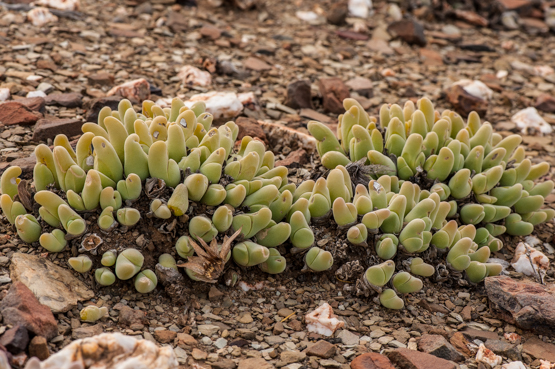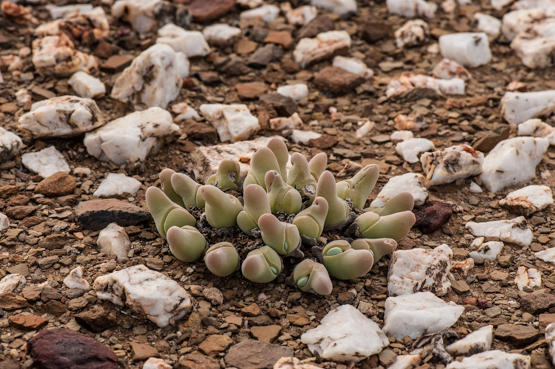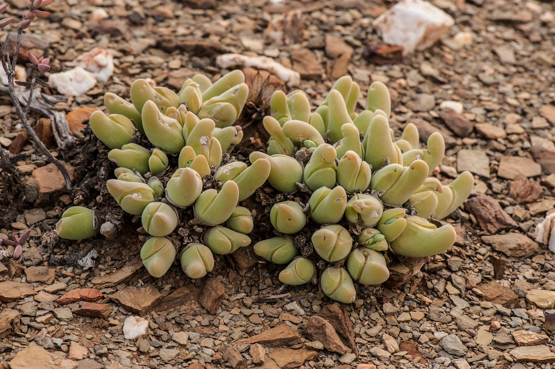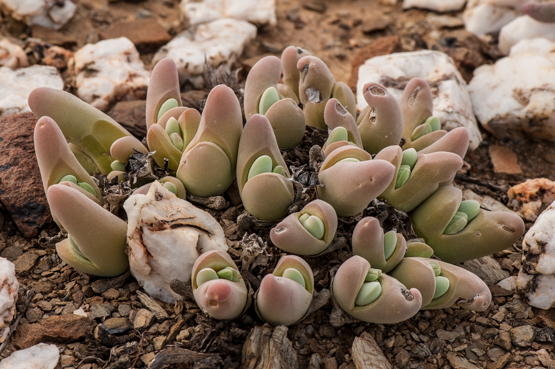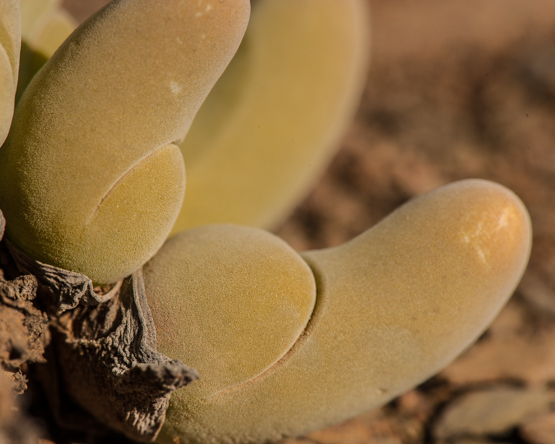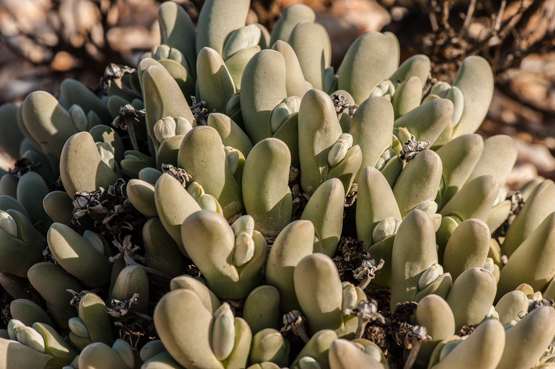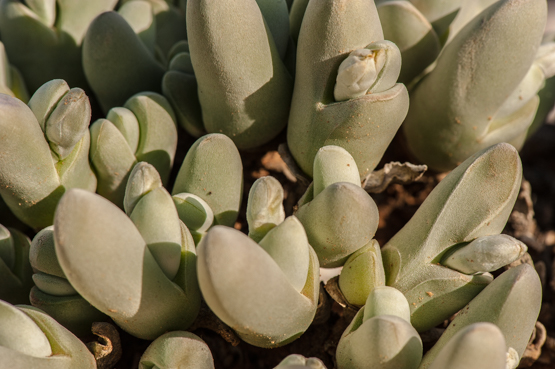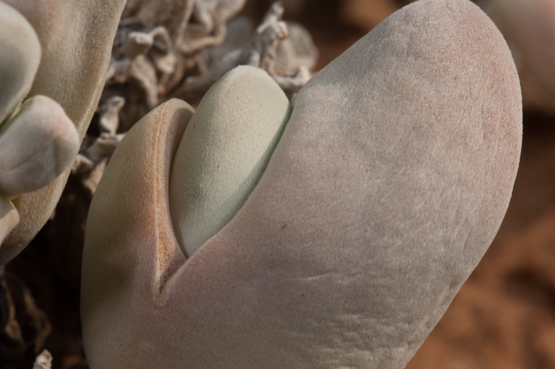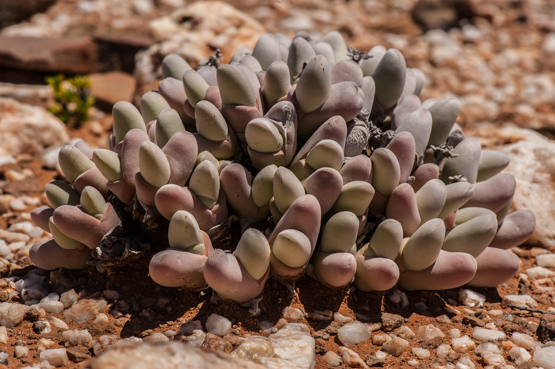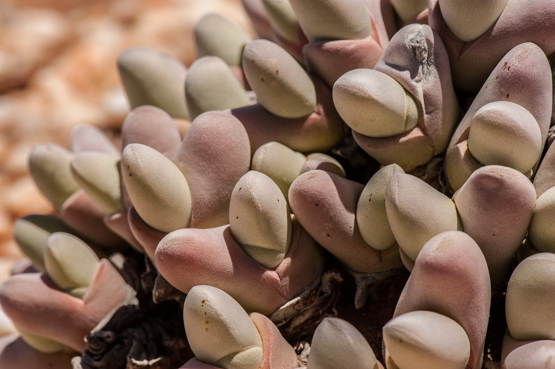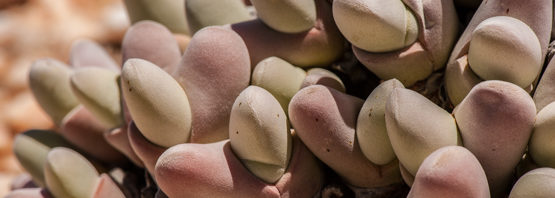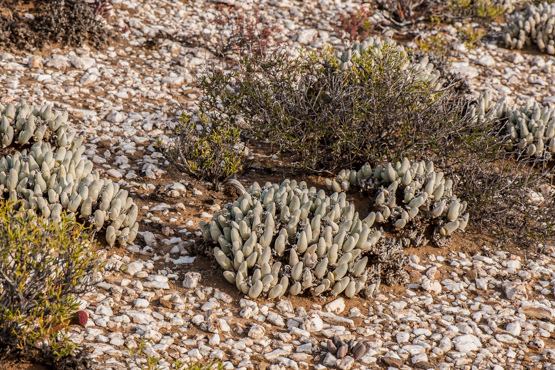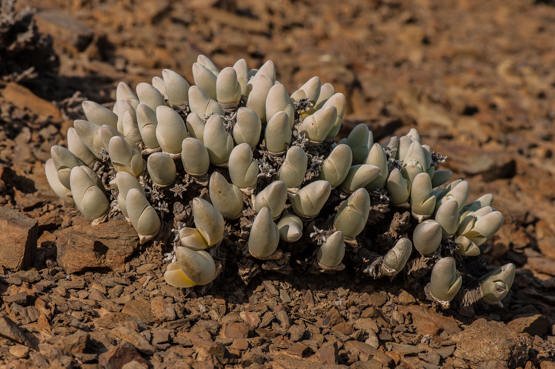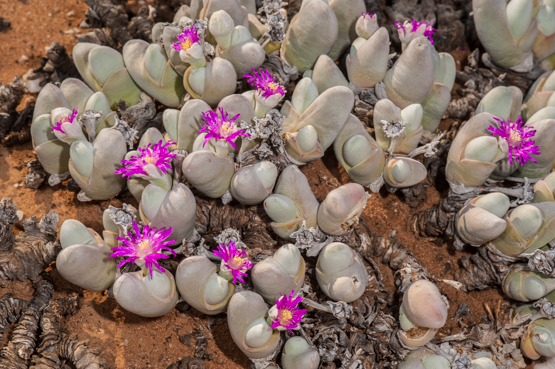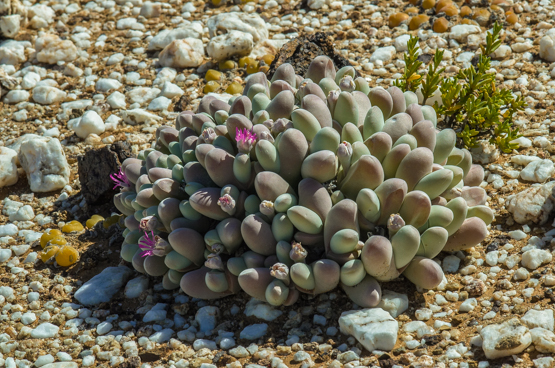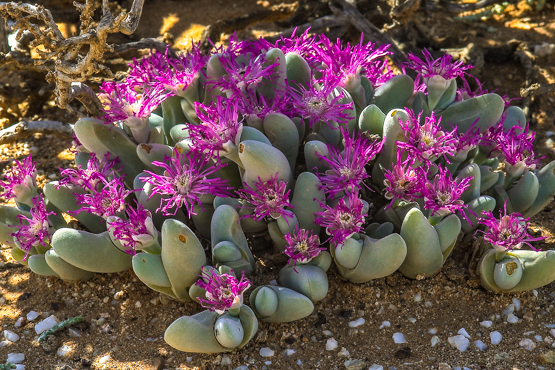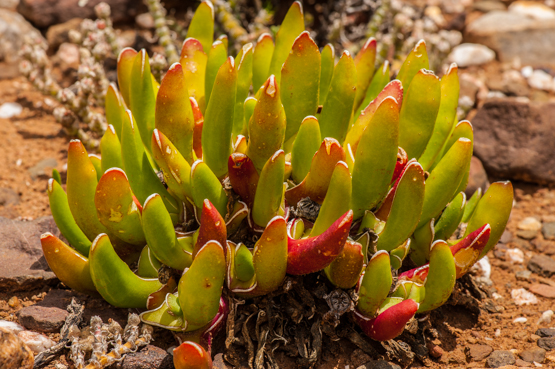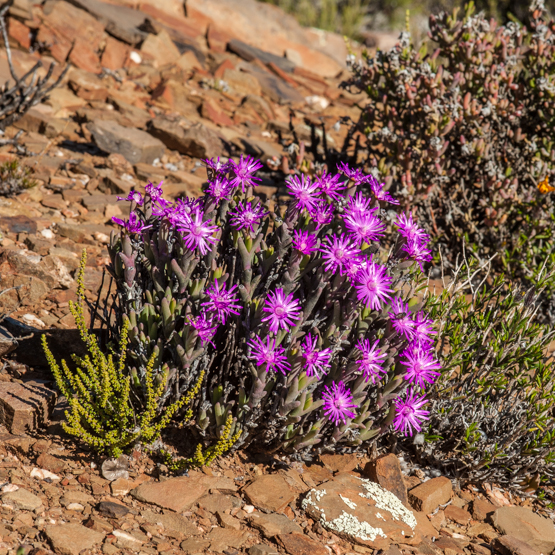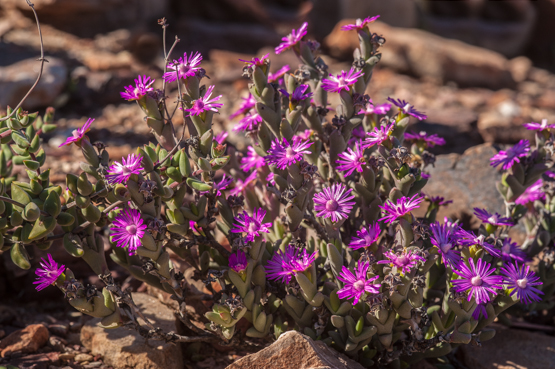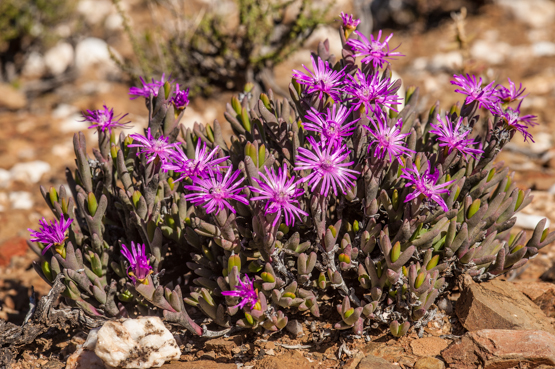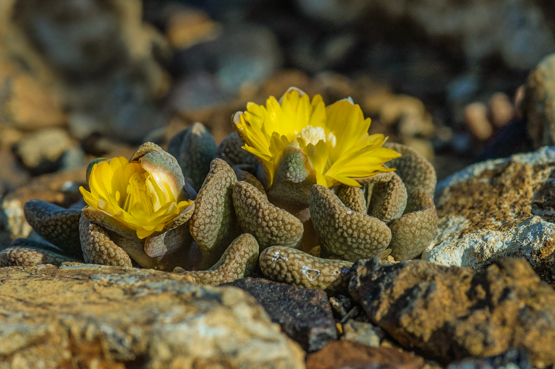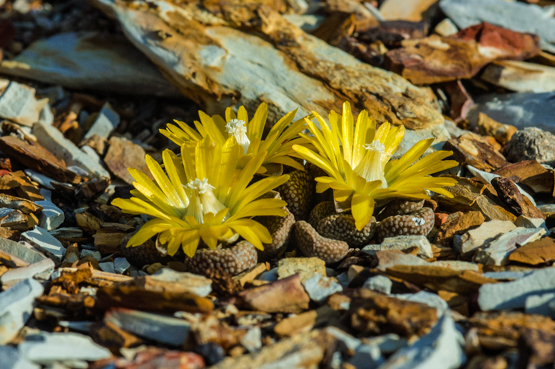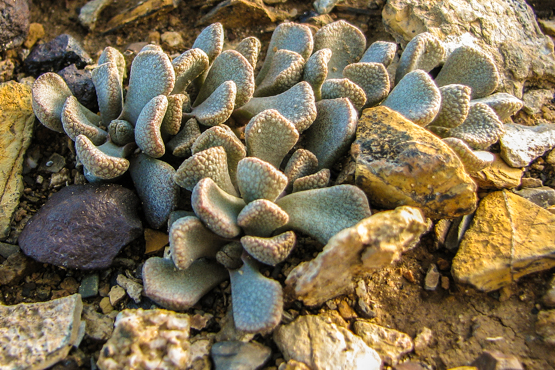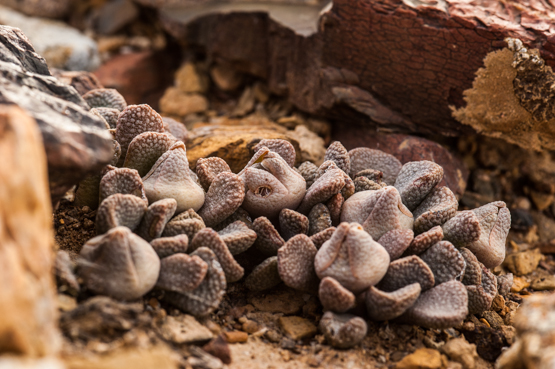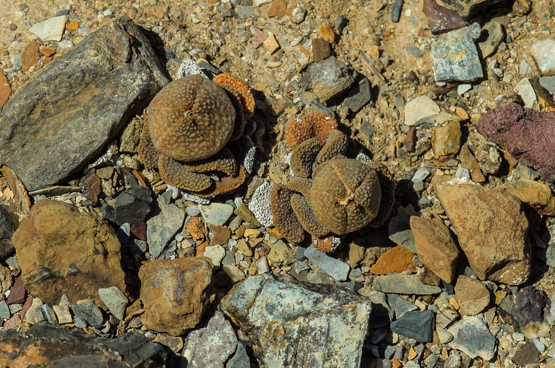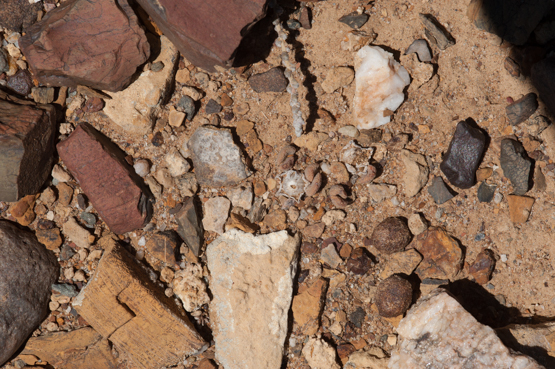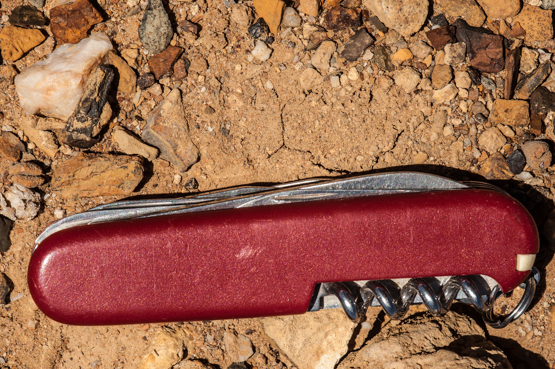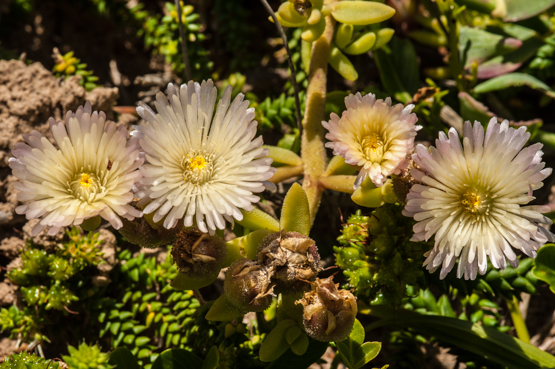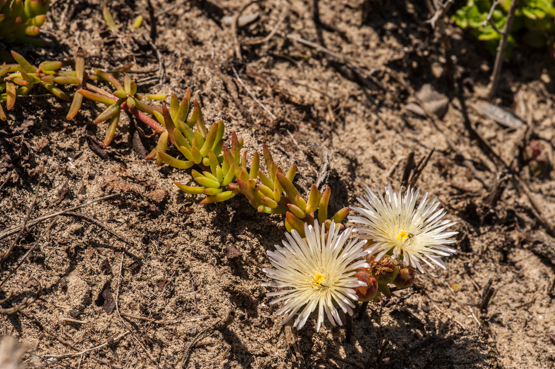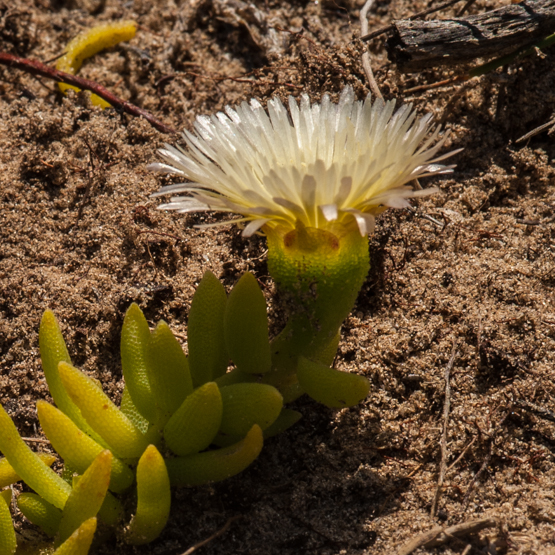The following pictures show G. pubescens ssp. shandii.
The last one was taken 3 May 2014, all the others 30 June 2013.
Tag: Aizoaceae (Mesembryanthemaceae)
Gibbaeum pubescens and shandii (part 2/3)
Gibbaeum pubescens and G. shandii (part1/3)
These two species are closely related and often difficult to tell apart at first sight. In fact there is only one cast-iron distinguishing character.
In The Gibbaeum Handbook (1953), G.C. Nel wrote the following with regard to G. shandii:
” This species is related to, and resembles G. pubescens in its general appearance so much that one can only decide after examining the tomentose covering with a hand lens, whether it is G. pubescens or G. shandii. The tomentose covering of G. shandii consists of separate, stellately branched hairs and the underlying greenish epidermis can be seen between the hairs. With the naked eye, the hairy covering seems continuous. The thick tomentose covering of G. pubescens consists of minute simple hairs pointing downwards and closely adpressed to the epidermis, to such an extent that the underlying epidermis is entirely covered by them. These two species occur either together in the same patch or they may be separated, at times, by a short distance. Both these two species form large white greyish cushions of various sizes.”
He then ends his discussion of this species as follows:
“The description of G. pubescens is valid for that of G. shandii. The only important difference is in the nature of the tomentose covering.”
In the light of the above it is not surprising that in 1983, H. F. Glen decided to reduce the rank of these two species to subspecies (G. pubescens ssp. pubescens and G. pubescens ssp. shandii resp).
Both (sub)species occur in the area between Ladismith and Barrydale in the Little Karoo.
The five pictures of G. pubescens ssp. pubescens shown here were taken at the following dates:
1,2: 30 June 2013
3: 14 Sept. 2010
4,5: 26 Sept. 2006
Glottiphyllum peersii
It is often not easy to identify Glottiphyllum species, but this one is an exception. The very unequal pairs of leaves with their white margins make it very distinctive.
It also differs from most other members of the genus by not occurring in the Little Karoo, but in the Prince Albert-Willowmore area.
Mesembryanthemum (Phyllobolus) resurgens 2
The fact that this species is a deciduous geophyte is reflected in the name, as one of the meanings of the word resurgens is: “Rising again, as from the dead”.
The plants are only up to 3 cm tall, with a thick caudex covered in cork, short stems and
leaves with large bladder cells.
In June-September they produce greenish yellow to pale salmon, distinctly scented flowers about 4 cm in diameter.
If you want to see the plants in nature, you have to go to the Northern or Western Cape Province, where they are widespread in the winter rainfall area from Namaqualand to Ceres and Laingsburg.
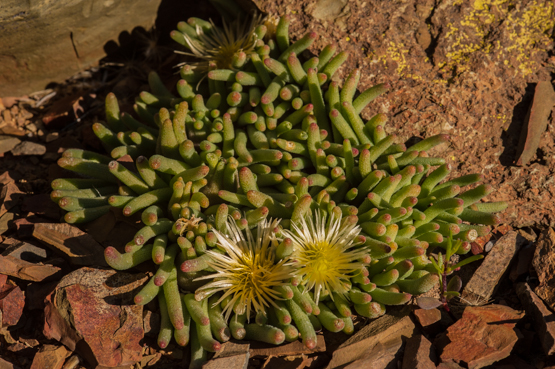
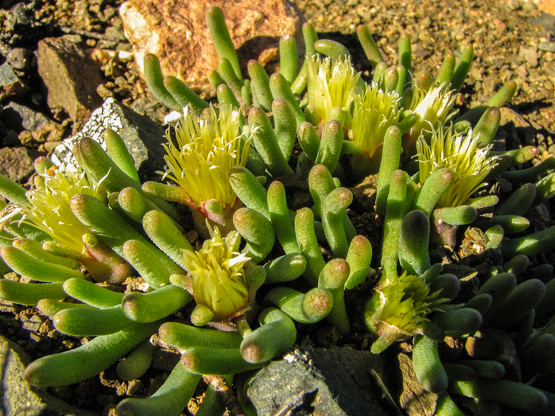
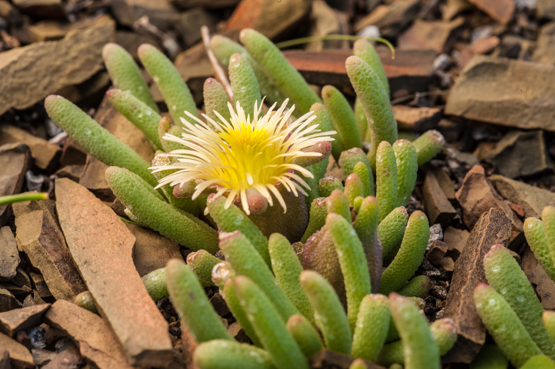
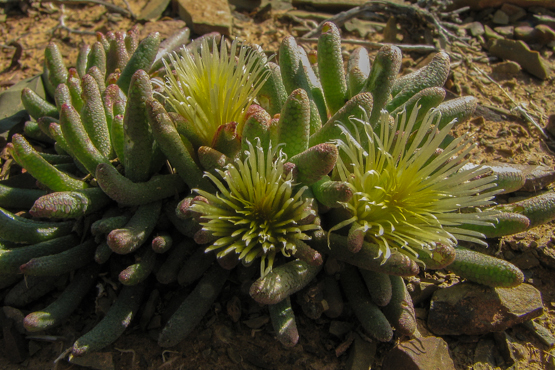
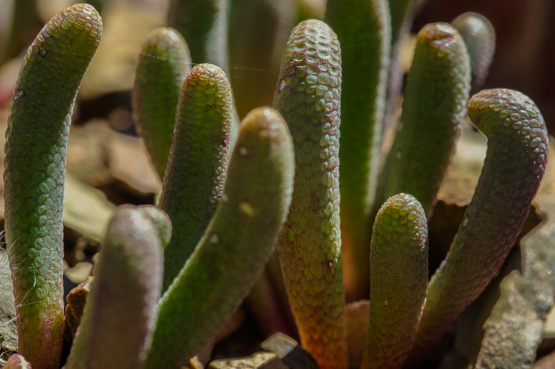
Mesembryanthemum (Phyllobolus) resurgens 1
I first saw plants of this species in autumn (May 2006) and had no idea what they were. Some peculiar Mesem maybe? The first picture gives you an idea of what they looked like.
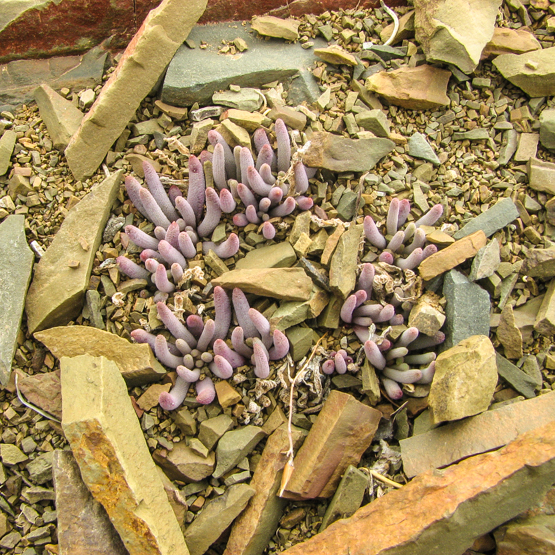
It took me about half a year to return to the spot (a few km northwest of Matjiesfontein) to try and make some good pictures, but when I came there, the plants had disappeared. There were no signs of digging by man or beast and I was sure it was the right spot. So what had happened? After a while it started to dawn upon me that the only thing that was wrong was the time. Because summer was approaching, the plants had done their annual disappearing act and I would have to wait till autumn to see them again.
In March of the following year I found out that the species was rather common in the area and also that they sometimes were much more visible (see pictures below).
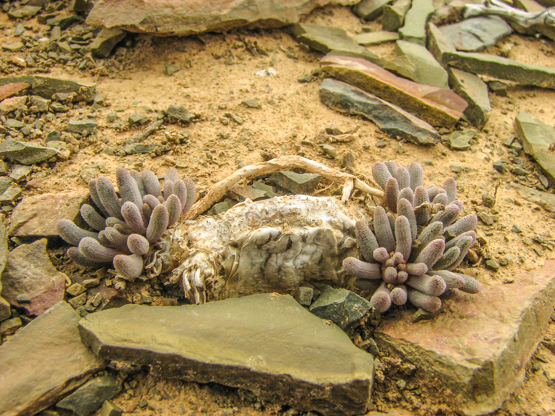
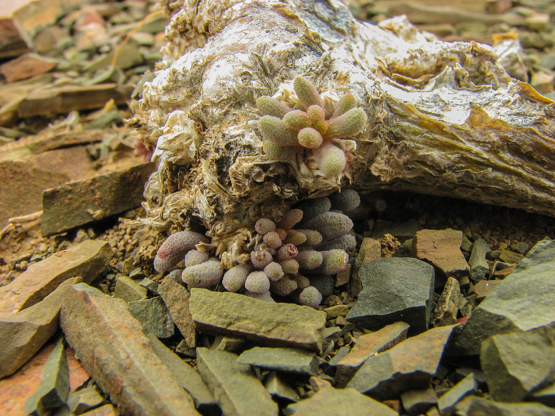
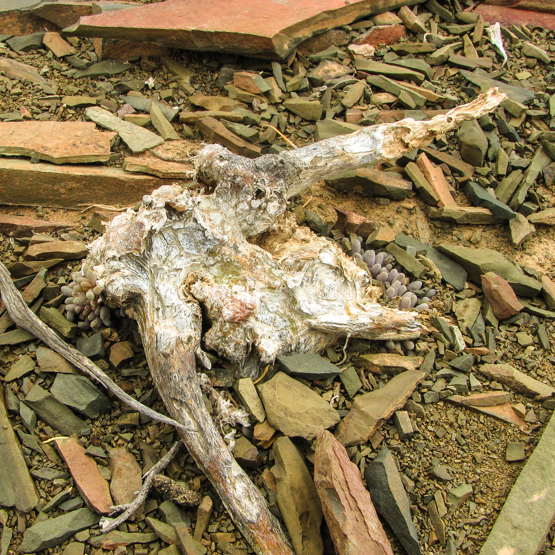
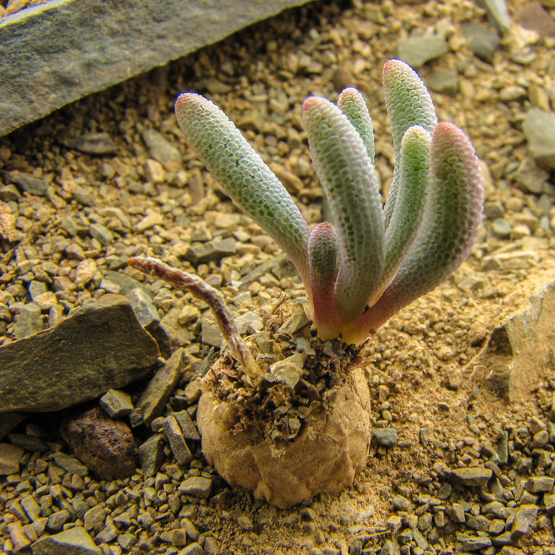
To be continued.
Ruschia karrooica
Aloinopsis loganii (2)
Aloinopsis loganii (1)
Succulent plants may store water in any organ of the plant body. Usually, leaves or stems are used for this purpose, but water can also be stored in the roots.
For this reason we speak of leaf, stem and root succulents. In certain plants the distinction is not so clear-cut, because they use more than one organ for water storage. The subject of this post is a case in point.
The first four pictures were made in winter and spring (between mid July and mid October) and clearly show that the species is a leaf succulent.
Or, so it would seem. The last two photos were made in summer (late January). In #5, most of the leaves have disappeared and the plant was only found because the fruits stand out against the background. In #6, the knife points at a plant at either side of it and here too, very little of the leaves is left.
This begs the question how these plants can survive the drought and heat of the remaining summer period. For the answer we have to go beneath the surface (literally). When we do that, we will find a nice fat tuberous rootstock with enough storage capacity for the plants to aestivate (spend the summer in a dormant state).
The species is only found in a small area near Laingsburg, where most of the rainfall occurs in winter.
To give you some idea of the size of the plants: the leaves are up to about 20 mm long, 8 mm wide and 4-4.5 mm thick.
Mesembryanthemum (Phyllobolus) canaliculatum
These plants are geophytes with tuberous roots; they occur from the Cape Peninsula eastward to Port Elizabeth, growing in coastal dunes.
As a special adaptations to their sandy habitat, they have long creeping branches rooting at the nodes.
The Aizoaceae family does not have not many members that are either geophytic or adapted to a habitat of shifting sands, but this species somehow manages to belong to both categories.
One can find the plants in flower from spring to mid-summer. The flowers are 2-3 cm in diameter and yellow, mauve or salmon in colour, sometimes with a red hue.
The leaves are almost cylindrical or channeled (=canaliculatus).
Photographed near Jeffrey’s Bay 25 Oct. 2012.
